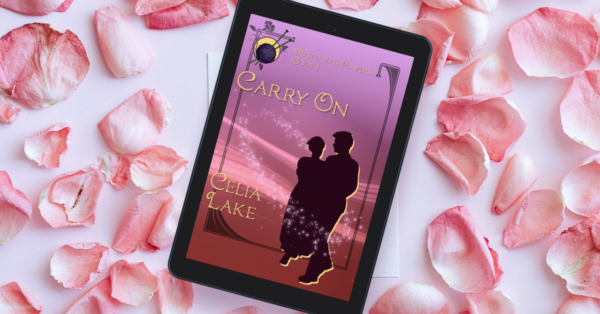Continuing on from last week’s post about apprenticeships in general, it’s time to dive into a specific set of training: Healers and related professions.

The Healers are one of the more structured and institutional apprenticeships for a variety of reasons. Like the Guard (which also has a similar process), there’s a particular need to be confident everyone has a similar level of training and background. Rather than leaving that up to individual apprentice masters and mistresses, there are structures that coordinate training.
Also, much like our own medical training, for many people it’s not always obvious which specialty they’d like to focus on until they’ve had more exposure to the various options.
Healer training
Choosing to apprentice as a Healer has several different routes. Most commonly, people express some interest during their other schooling or education. Many Healers and related professions attend Schola or Alethorpe. But some come into via village schools, simpler apprenticeships in a related field, or coming to the attention of a village Healer who thinks they’d do well.
The beginning of the apprenticeship is the same for all Healers (or potential Healers). It begins with a year or so of covering many different areas of the field. From there, people move into two week rotations with a number of different areas of the Temple of Healing and specialists.
That’s enough to get a sense of whether an apprentice is interested in that particular area. For the Healers in the speciality to consider if they’d be interested in taking on an apprentice this cycle. (The epilogue of Four Walls and a Heart has an example of what that looks like for the Guard.)
Payment for training
In the previous post, I mentioned that most apprenticeships do involve a fee (or at least some sort of trade). The Healers work a little differently. They do hope for a fee to cover the costs of the training.
However, it’s fairly possible to teach someone to be useful to the Temple of Healing fairly quickly (by sharing their vitality for healing procedures or doing other similar tasks). So there are some simple options for people who don’t have much money. Generally, people need to cover their living expenses (room and board), though there are some scholarship options for that as well.
Healers are a public good, there are never enough of them, and so there’s support for training more.
Lending vitality
One of the key things that nurses do – and Healers as well, though as a second choice in most cases – is lend vitality to the Healer directing certain kinds of care. This allows for a much wider range of magical action than one person’s body can sustain on their own. Healers get direct training in how to manage that (both sharing their own vitality and using someone else’s), as well as a focus on how to do that without causing problems longer-term for anyone in the chain.
(Thalia, in Mistress of Birds, had some bad experiences with this in the depths of the Great War, when no one had any resources to spare anymore.)
Nurses often specialise in particular kinds of care. Elen, in Carry On, has focused on long-term recovery and care. She’s certainly able to lend vitality in an emergency, but she’s more likely to be using her magic to keep someone comfortable or to provide better care.
Emergency care
One question I got was about emergencies. Every Healer gets a fair bit of training that’s relevant: stasis magic to stabilise someone until they can get to better care is a big part of healing magic. Most Healers can do it readily, so long as they’ve got enough of their own vitality to work with. (As with physical energy, there are limits.)
However, this is also a skill that’s taught to any Guard who has the capacity for it. The Guard handle a lot of “there’s been an accident” initial responses, especially the Guards posted to specific villages. They need to keep things stable until more help come from Trellech (via portal) or the nearest demesne estate. What a given Guard can do depends on their own magical capacity, but it generally includes a solid level of skill as a first responder to triage, stabilise, and figure out what’s needed while keeping the patient alive.
Mental health
In terms of mental health – that one is still a developing field in Albion in most of the period of my writing. Albion has not yet developed its own schools or training methods (beyond direct apprenticeships) for psychotherapy or similar approaches, and the various oaths and obligations of Albion and the Pact often complicate someone learning in other setting.
But people are definitely aware. Alexander, for example, mentions meeting Alfred Adler on a ship at one point and being familiar with the basic theories.
However, various professions do have an eye on emotional and mental well-being. Most commonly, this is considered part of the work of Healers and nurses at the Temple of Healing. It’s particularly true in the baths, which are a space for physical healing, but also for reconnecting someone to the world around them after trauma in ways that allow for mental space and new possibility again. There are also a number of modes of ritual magic that can help here, and specialists familiar with those methods are reasonably available.
The Gospatrick Home, seen in Casting Nasturtiums, also does some of this sort of work fairly deliberately, but without ever calling it any kind of psychotherapy or similar. Alas, a number of their residents have had bad experiences with some of those approaches before arriving.
Religion
That makes it worth a note on religion. Christianity is decentralised but still present in Albion (following the Dissolution of the Monasteries and Cromwell’s Protectorate, a lot of the magical families went deeply back into family traditions, especially reconstructionist Roman practice). And a range of other major religions (we’ve seen Hinduism and Judaism in particular so far in at least some detail).
By the mid-1800s, there’s a fairly significant network of small devotional networks focused on specific deities. Most of these have at least one property with some land with at least a few people who devote themselves to the deity full time. There are also others who are affiliated but not priests or priestesses. Carry On has an example of this, with a priestess of Sirona.
Similarly, all Healers and nurses take oaths to some relevant deity as part of their commitments to their profession. (These are anchored by the Pact, so they’re binding in the same ways that Guard oaths that prevent abuse are binding. However, there are certainly ways that people work around them at times.) There are some options if someone is truly atheistic, but that’s relatively uncommon in the period of the books.
Certain roles at the Temple of Healing (the baths, but others) can only be led by someone who’s also a priest/priestess, all Healers make an oath of some form related to a deity of healing (there are options if someone’s truly atheistic, but that’s also relatively uncommon in this period.)
Rhoe is about to move into one of those roles as Sailor’s Jewel takes place, as the priestess in charge of the baths. She stays in that role until her retirement.
Back next post to talk a bit more about individuals making the Pact and some less common circumstances.
